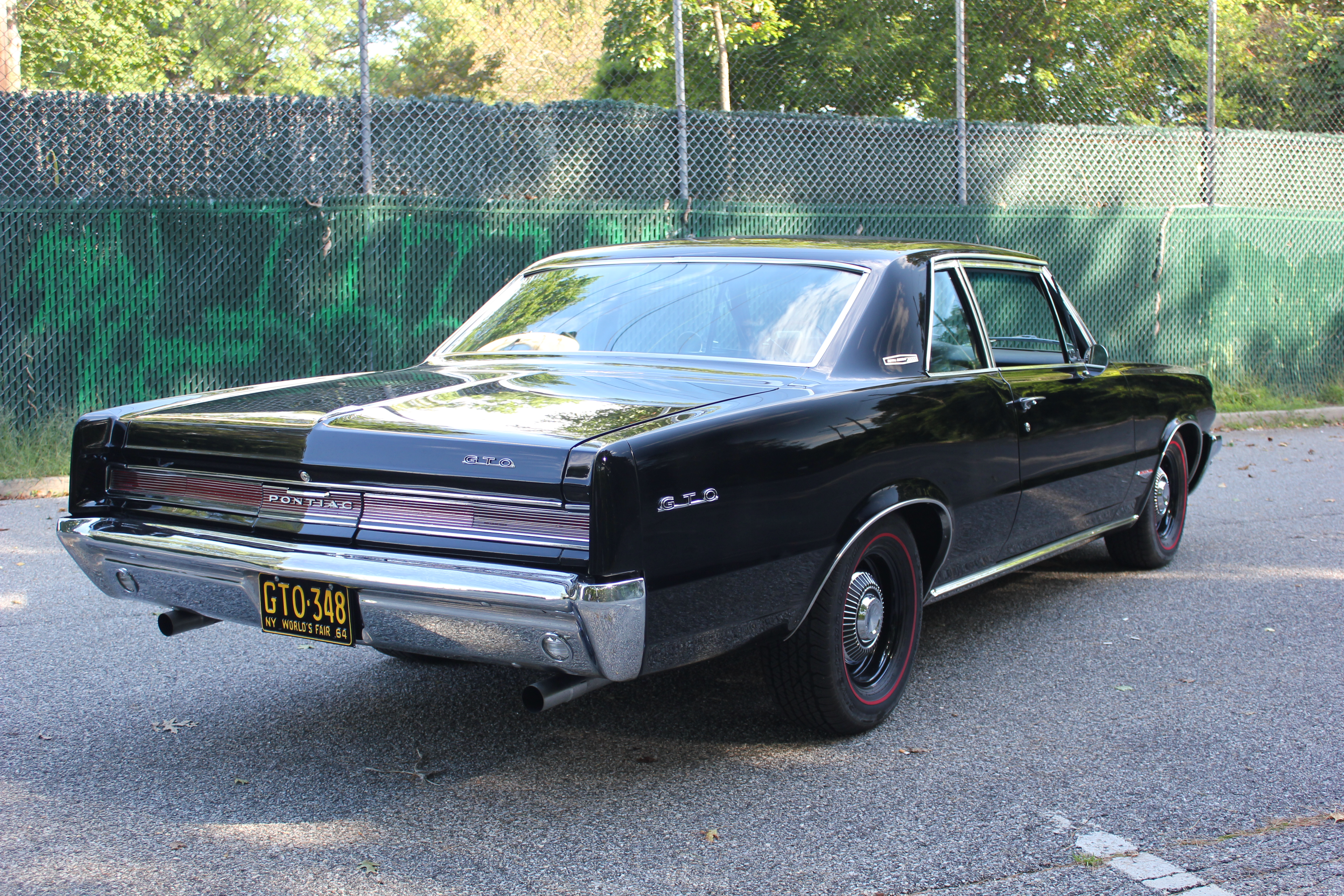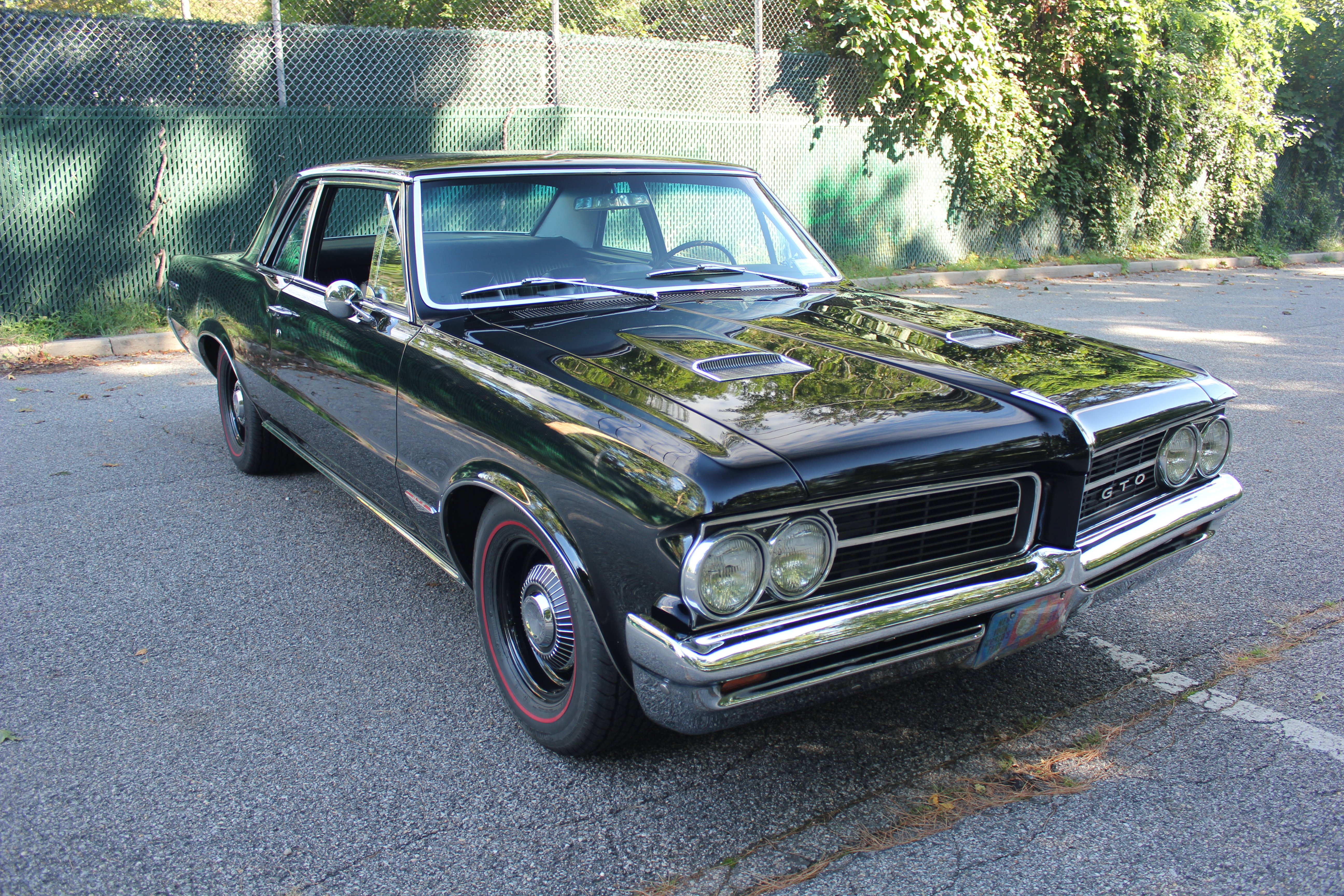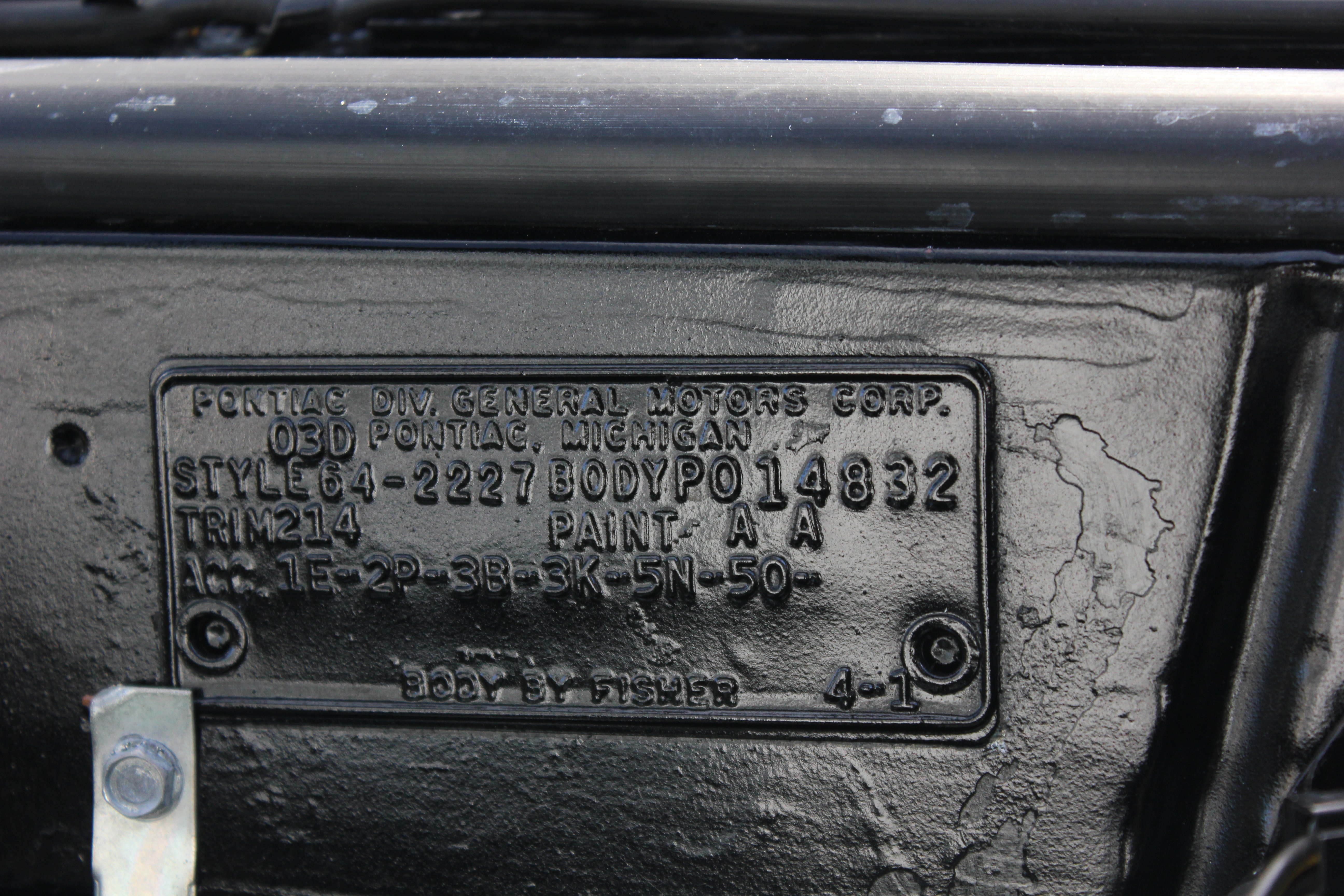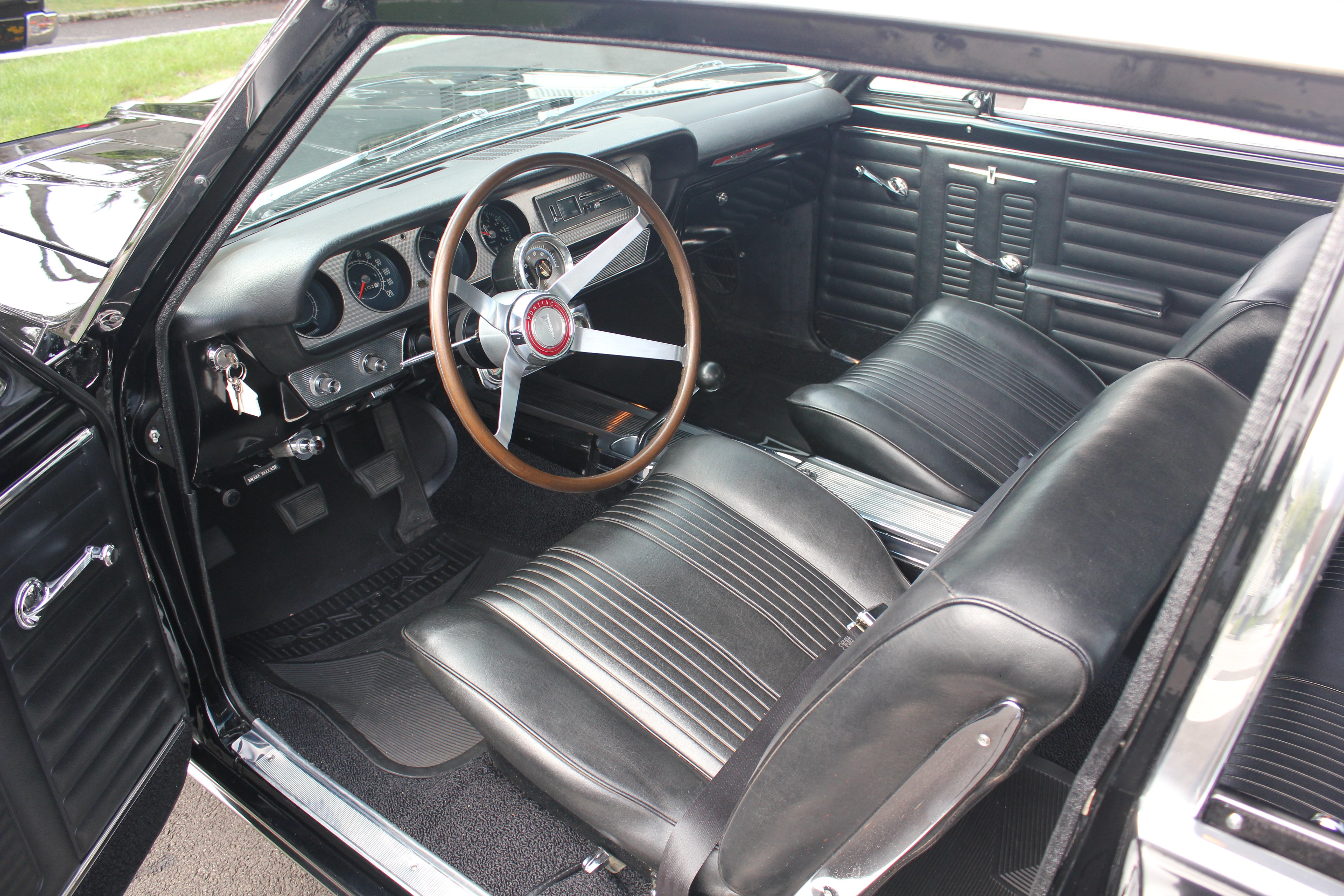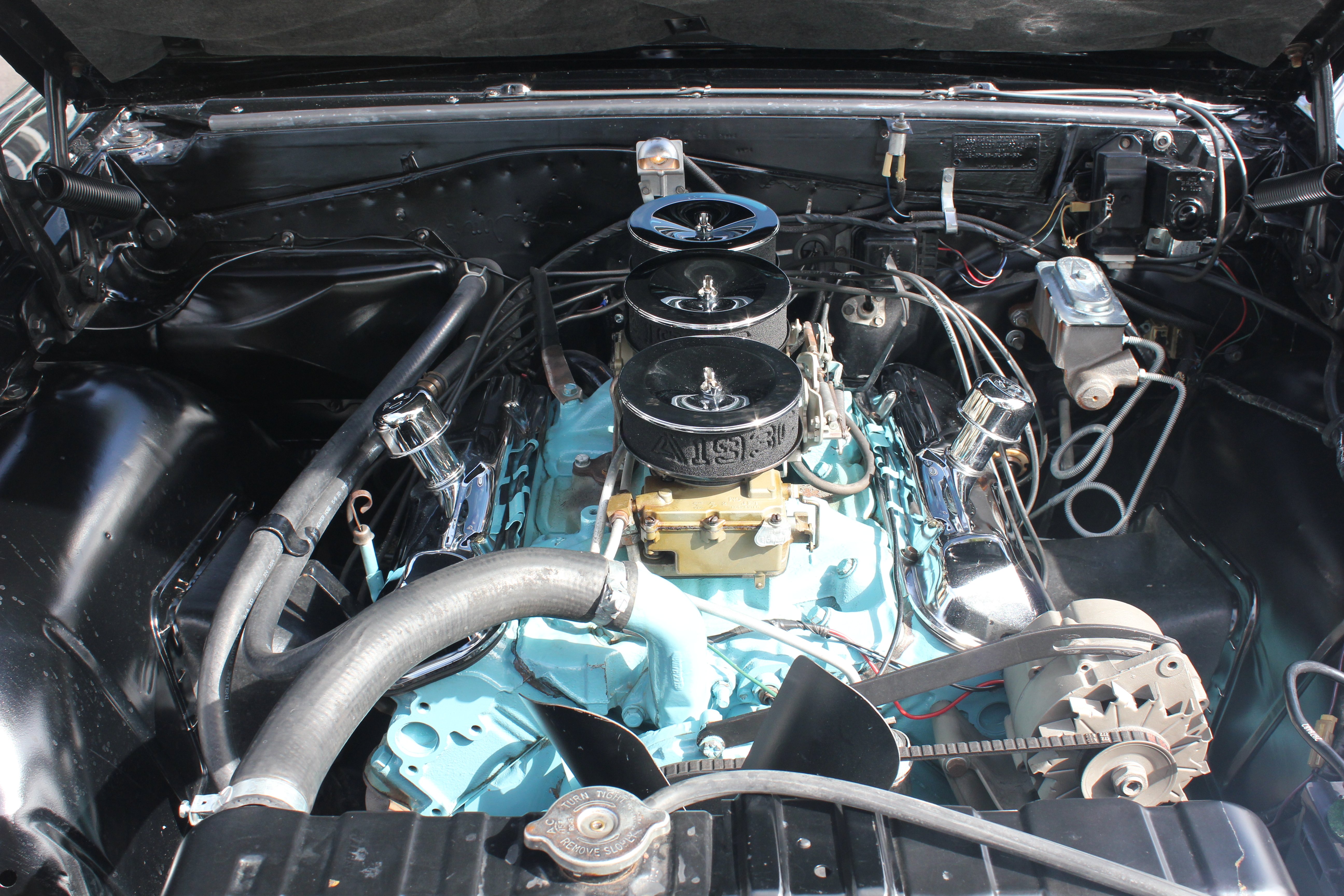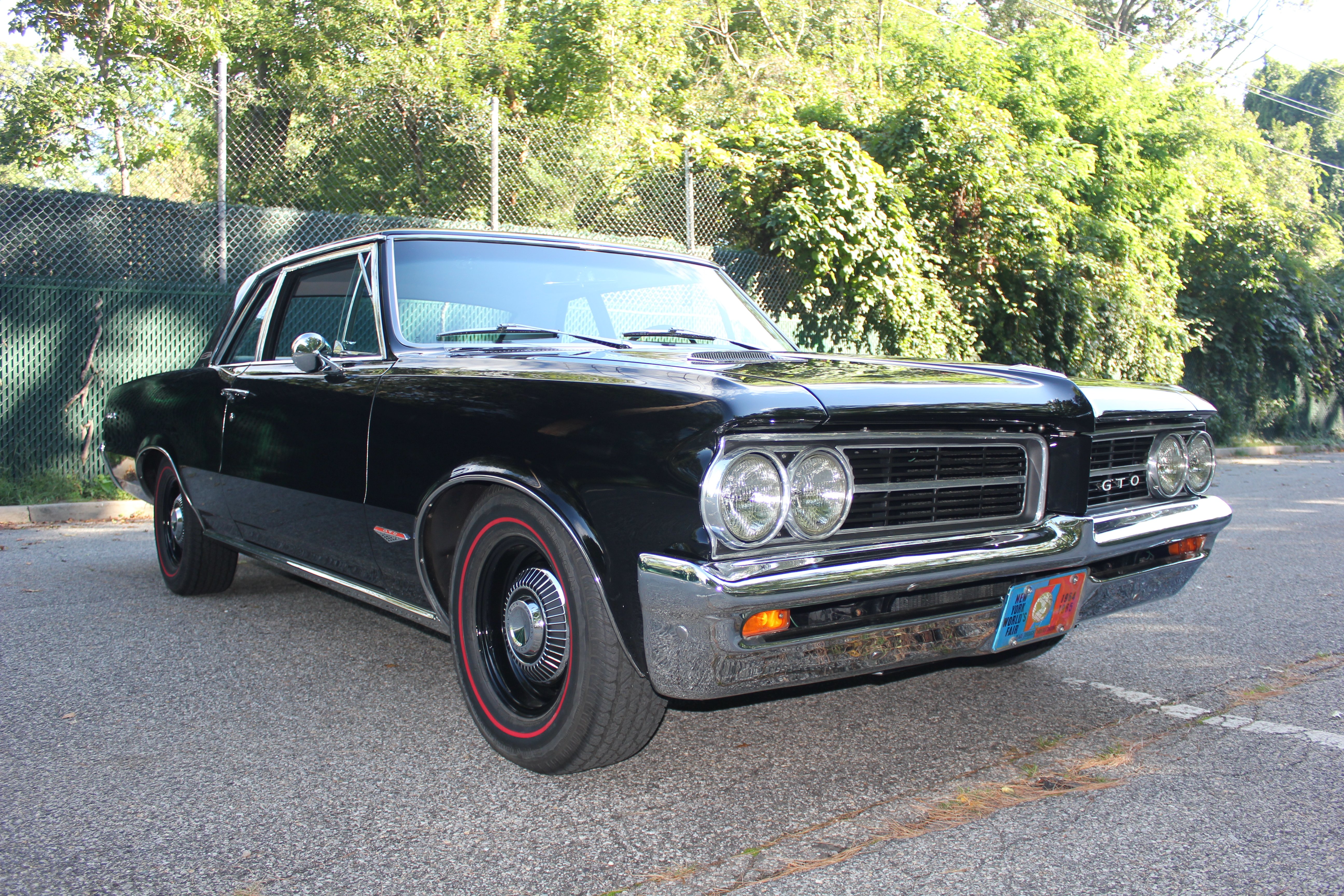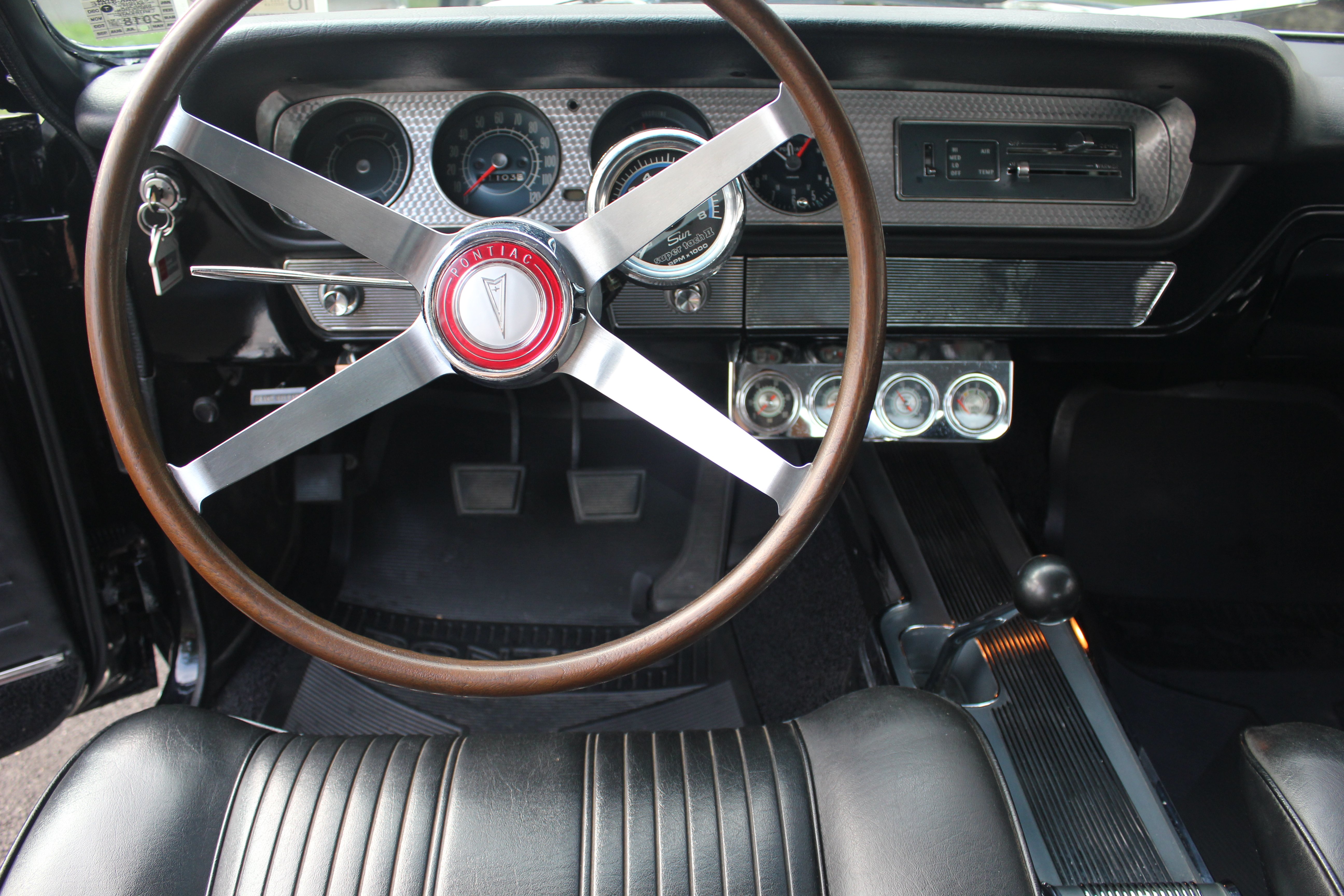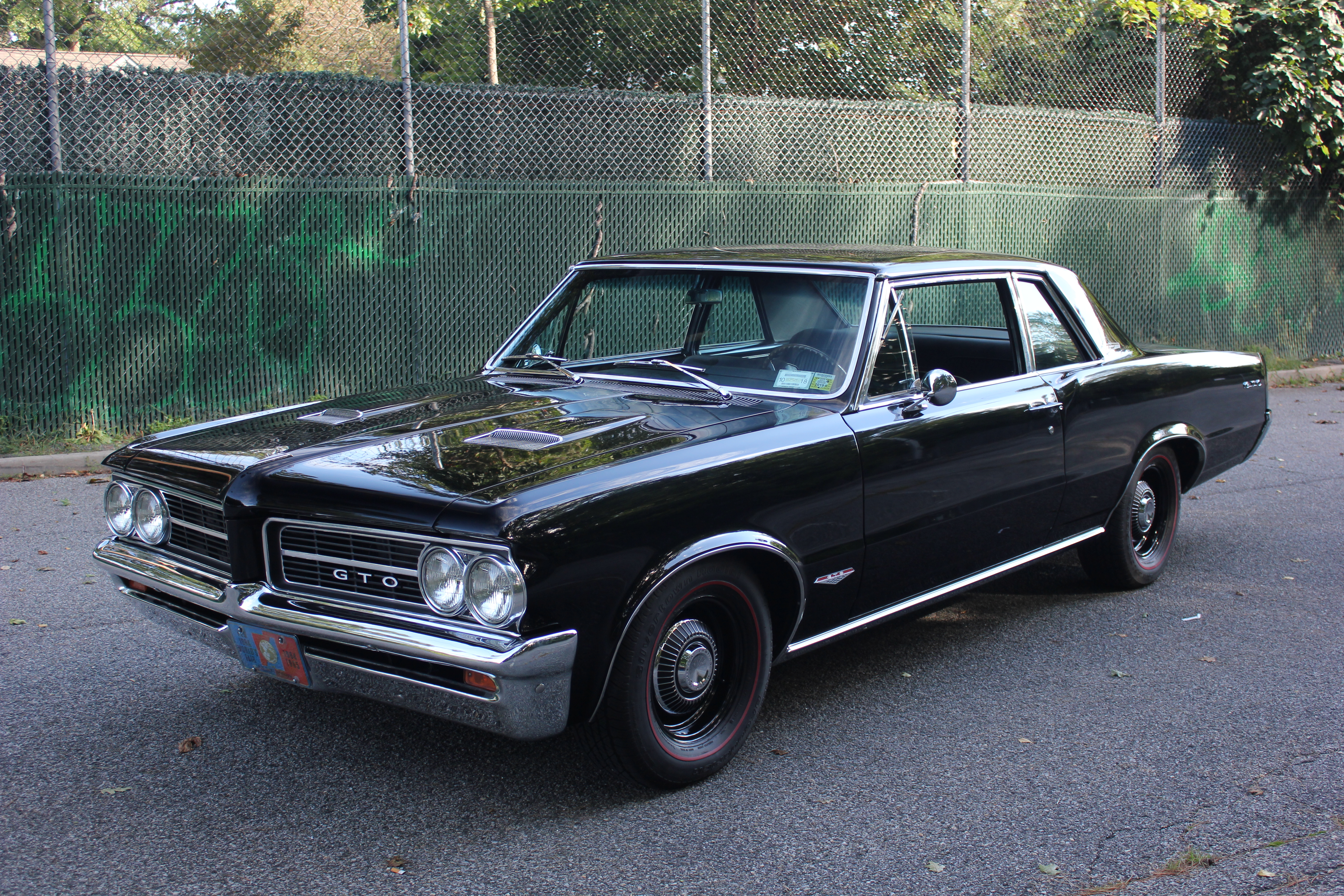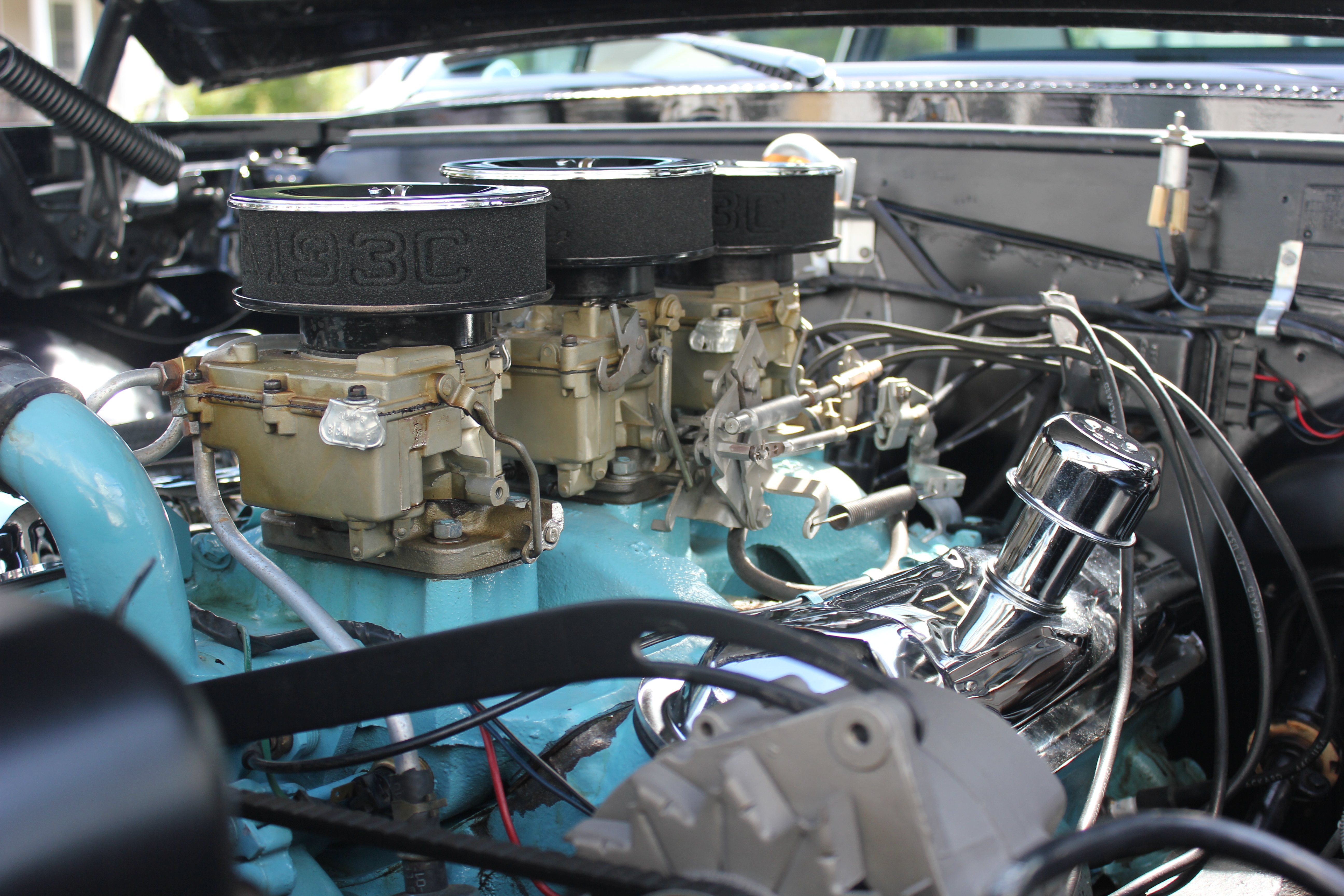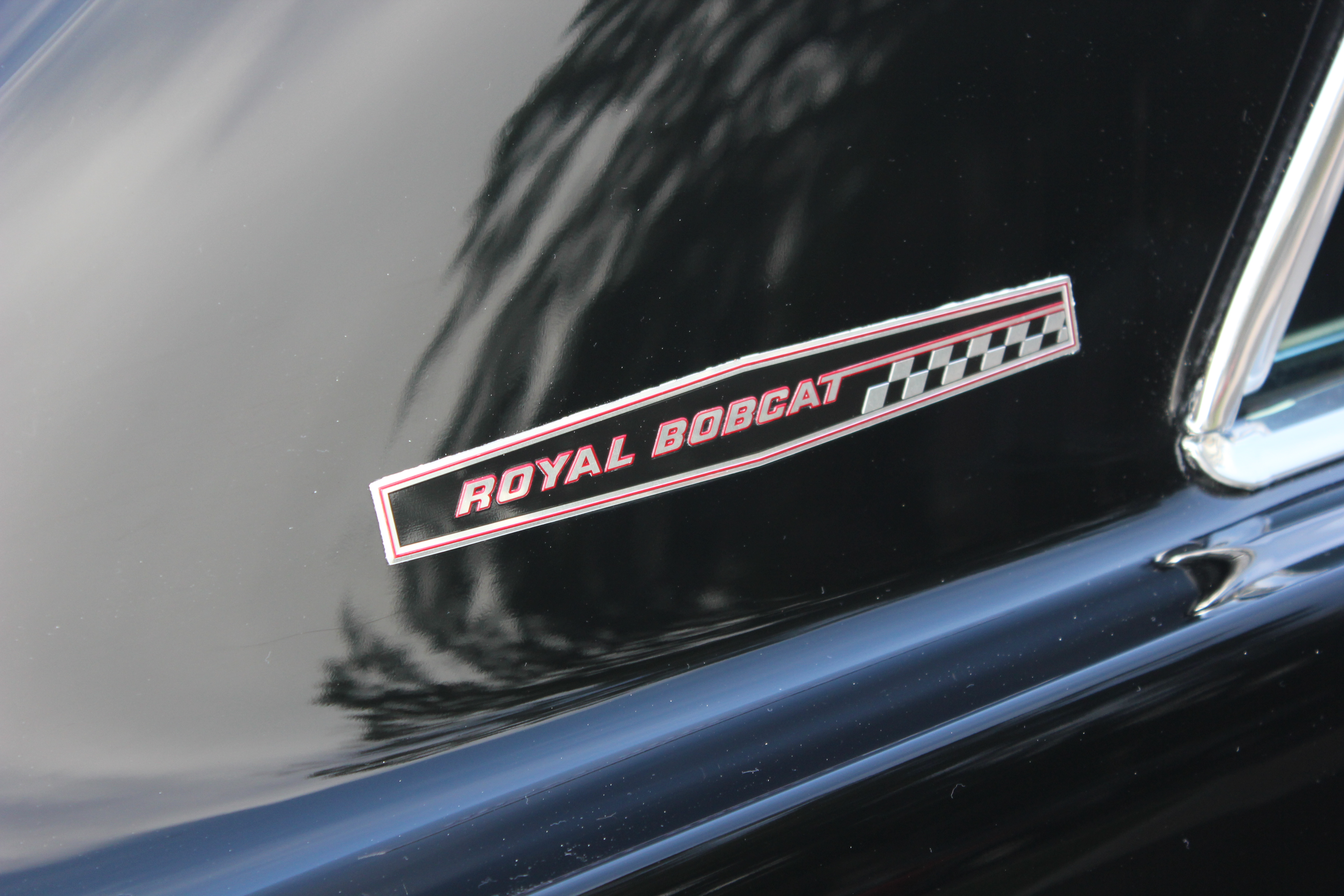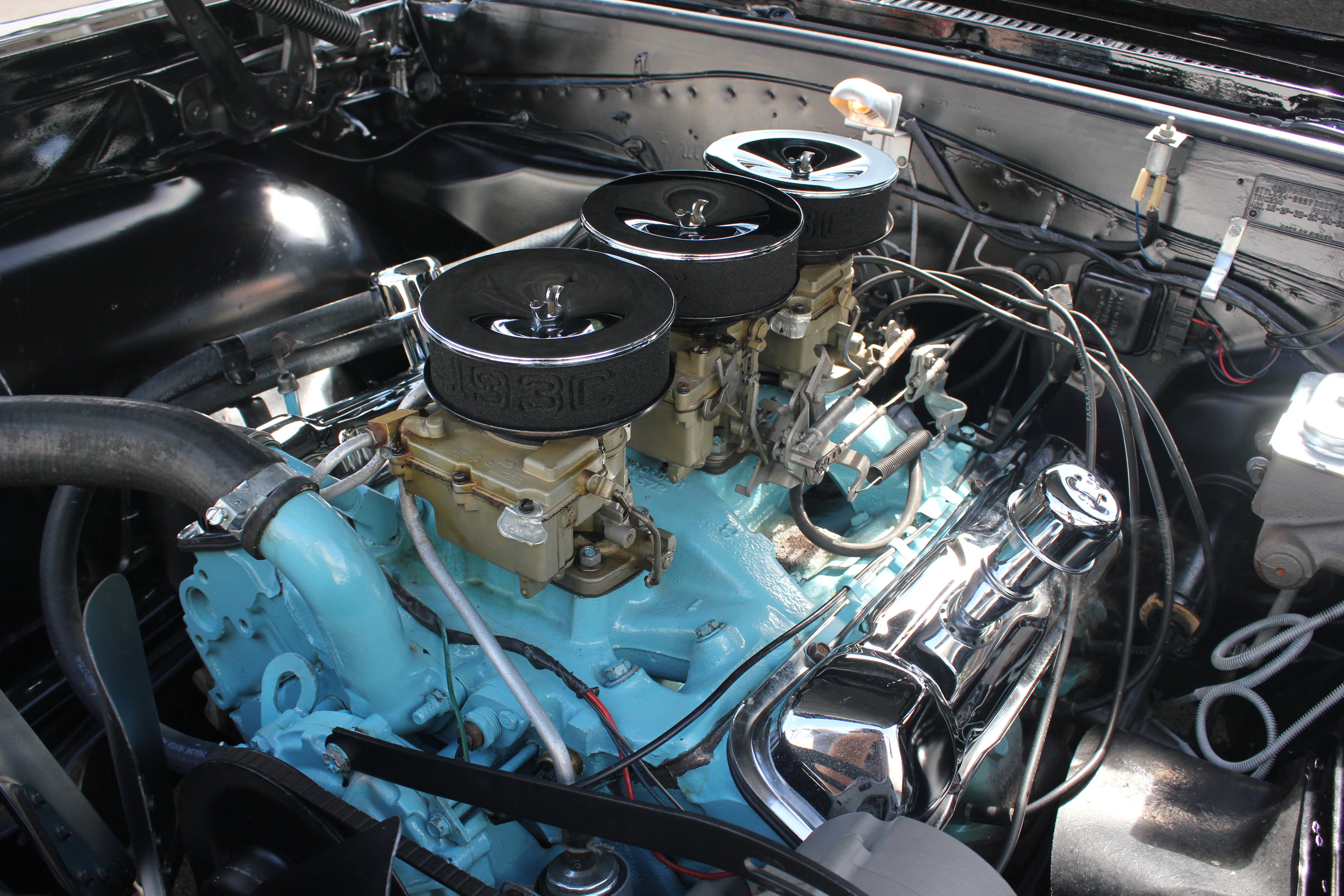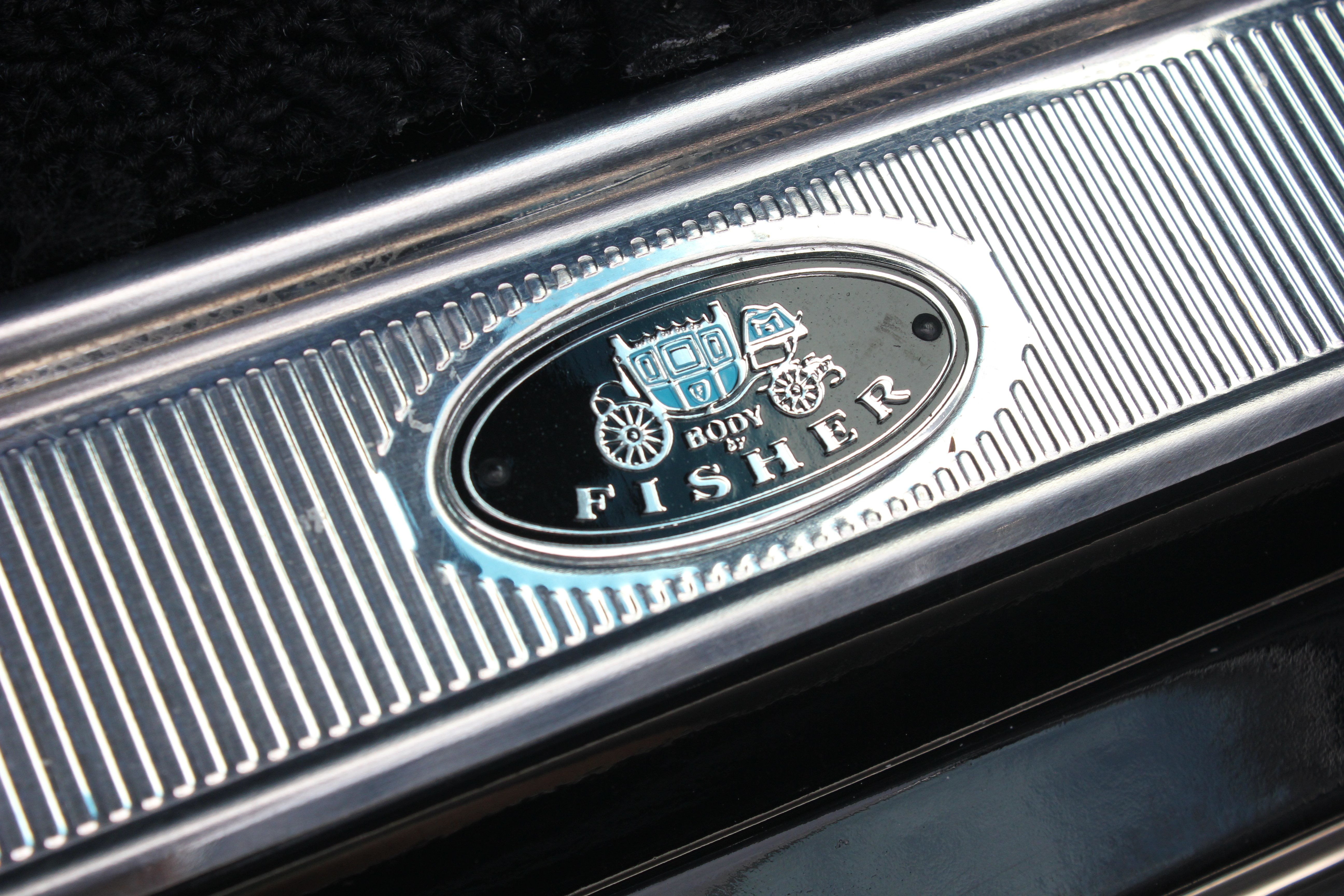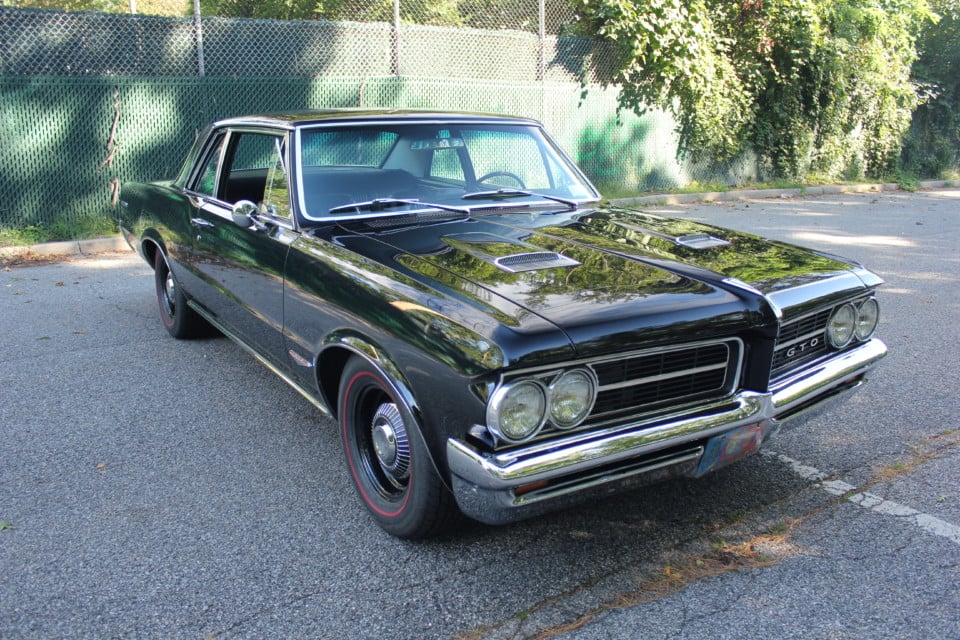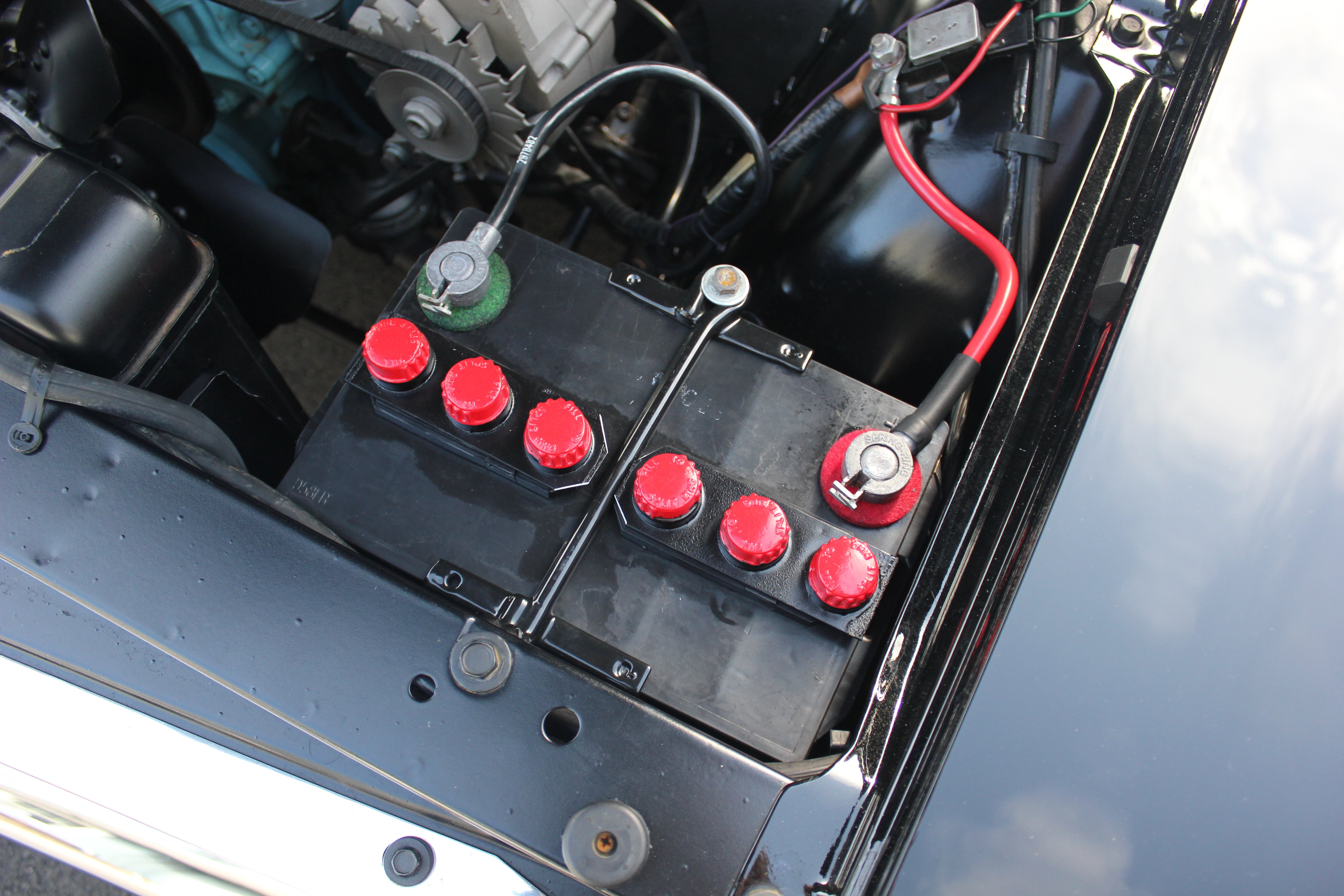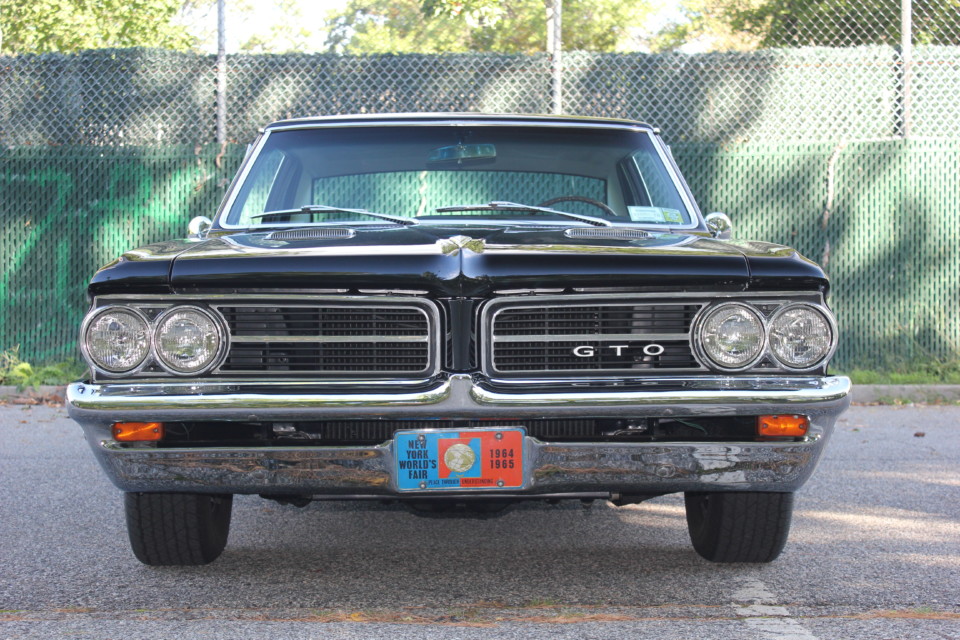 When Frank Signoriello ordered his GTO back in February of 1964, he couldn’t have foreseen the historic impact this new Pontiac would have on the automotive world. All he knew for sure, was he had to have one as quick as possible. This momentous story starts prior to Frank taking possession of his factory fresh Goat and continues throughout the last half-century to this very day.
When Frank Signoriello ordered his GTO back in February of 1964, he couldn’t have foreseen the historic impact this new Pontiac would have on the automotive world. All he knew for sure, was he had to have one as quick as possible. This momentous story starts prior to Frank taking possession of his factory fresh Goat and continues throughout the last half-century to this very day.
LEAD-UP:
At the age of 82, Queens native and retired Supervisor Mechanic for the NYC Department of Sanitation, Frank Signoriello, was always a car guy, but not originally a GM man. Frank waxes poetic about being a major proponent of the Blue Oval and putting his mechanical prowess to use by moonlighting at local Ford dealerships. This allowed him to tune his hot-rodded ’56 Crown Victoria with multiple engine swaps for heavy-duty drag racing back in the day.
By 1963 Frank got wind of Ford’s limited production Fairlane Thunderbolts, complete with lightweight body panels, stiffened chassis, and monstrous race-only 427ci high-rise motors. Ready for some serious upgrading, Frank knew if he could get one, he’d rule the track and terrorize the streets.
Although the Thunderbolt was technically available to all-comers ready to cough-up the steep (for the day) $4,000 sticker price, Ford dealers were instructed to order the Super Stocks only for NHRA drag race sanctioned teams – who could prove it. Ignoring this fact and armed with his NY Italian swagger, connections with the dealer and the necessary moolah to seal the deal, Frank confidently entered the dealership barking, “I want to order a Thunderbolt”. This overconfidence soon backfired as the salesmen and owner informed him that no such order could be placed for the aforementioned reason.
Without going into the expletive-filled argument that ensued, the result of this ugly encounter led Frank to quit his job at the dealership. Checking other local and not so local Ford dealers, Frank unfortunately soon discovered that the altercation had left him blacklisted by the dealership’s influential owner. Needless to say, this brought his Thunderbolt dreams to an abrupt end as well as his loyalty to the Blue Oval.
PIERCED BY THE ARROWHEAD:
Before starting a new position for the Dept of Sanitation- in January 1964, Frank and his better half went on vacation to sunny Daytona Beach, Florida. Franks wife Roberta was working for a lock distributor at the time, whose buddy just happened to be the locksmith at Daytona Speedway. A free tour presented itself, so Frank jumped at the opportunity. As destiny would have it (unbeknownst to Frank at the time), this was a very significant time to be at Daytona. Still heavily bruised from his dashed Thunderbolt aspirations, Frank’s mind had opened to other performance car options and the machine he first laid eyes on that fateful day would drive his life for decades to come.
During the tour, Frank spotted two cars down on the track that he did not immediately recognize. As he moved closer to where the pair of slim-bodied, mid-sized coupes were parked, he saw their markings. They were Pontiac- Tempest models – one blue, and the other red – but there was something else. Three letters set in the grilles, rear quarters, and trunk lids – those letters were G-T-O. Leering from the stands, Frank couldn’t get close enough for a look under their scooped hoods, but needless to say, he was more than intrigued.
It seems the car Gods had spoken, leading Frank to one of the greatest race tracks in the world, just when Pontiac was about to test their factory hot rod’s performance capabilities. Being covered by Car & Driver, the new G-T-O was to be pitted against its Italian prancing horse namesake. This famous, if not completely truthful contest would be the first major promotional marketing effort to spread the word to the automotive world about Pontiac’s new muscle car.
That night while strolling the streets of Daytona, Frank came across the local Pontiac dealership and with fate striking once again – the red G-T-O from the track was parked hood-up, right in front. As Frank approached the mystery car he, was beset upon by a salesman and shop mechanic. Seeing Frank’s widening eyes, the salesman pitched the new Poncho and it didn’t take long for Frank to bite. After the mechanic chimed-in, informing Frank that it had a 421ci V8 and pointing out engine numbers to prove it, Frank barked, “I want to buy this car.”
“I can’t sell you this car, it belongs to Pontiac,” said the salesman. Discouraged by its unavailability, but stunned by the new Pontiac’s powerplant, Frank returned to New York with food for thought.
Originally a performance package for the Tempest Lemans (W62), Frank soon learned that the production-blue mill between the GTOs slender fenders was a 6.5-liter with 389 cubes, not a hopped-up 421ci version like the one used for bragging rights against Ferrari’s finest. Still impressed, Frank walked into Breitfeller Pontiac in Queens to order his Goat in February of 1964. With optimum performance in mind, he chose the lighter, stiffer, and faster two-door post version in all-business black, inside and out.
Frank specified that his 389ci motor come topped by the potent Tri-Power option – upgrading the standard four-barrel carburetor to a Carter triple-double barrel set-up – effectively bumping power from 325 hp to 348 ponies. Last, but certainly not least, he checked-off the stout 3.90 rear-axle gears, which paired-up with a close-ratio (M21) Hurst-shifted 4-speed transmission. His is also a radio-delete car – no need for music with exhaust tunes like that.
ON THE WORLD STAGE:
After seeing Car & Driver’s March ‘64 issue featuring the red GTO he’d spied at Daytona, Frank’s impatience for his new Goat only intensified. Little did he know, he’d have to wait a bit longer than expected. As spring approached, so did the World’s Fair being held in Frank’s own backyard of Flushing Meadows, Queens. It was known that Ford was debuting their new Mustang pony-car at the event, but GM had something up their sleeve too. Going tit-for-tat, Pontiac would roll-out their new GTO, but here’s where things got interesting.
With fate once again at play, the display car coming from Detroit was damaged in transport – Pontiac would need a replacement and fast. GTO production was still in its infancy and it seems those cars ordered in the eastern region had been delivered to their owners already – all but one that is. Frank’s phone soon rang, it was Breitfeller Pontiac informing Frank of the situation at hand.
Unmoved by Pontiac’s plight, Frank just wanted his new car, but they made him an offer he couldn’t refuse. To use Frank’s GTO for the ceremonies, GM/Pontiac would supply as many World’s Fair tickets as he wanted with VIP access to everything, and personal use of the dealership owner’s wife’s car for the duration – a brand new, fully-loaded ’64 Grand Prix. Satisfied with the terms, Frank agreed, and for two weeks in April of ’64, Frank’s soon-to-be-delivered GTO was used for promotional purposes by the dealer at the World’s Fair.
ADDING MORE MEOW:
By the end of April, Frank finally took the keys to his new Goat and wasted little time running the quarter-mile at his favorite Long Island tracks. West Hampton (formerly Long Island Drag way), and National Speedway. Frank loved the car, but being the motorhead he is, was less than thrilled with his initial mid-14-second runs. So, he quickly replaced the squishy rubber bushings beneath the Hurst stick with some solid brass pieces, had a set of Doug’s Tri-Y headers installed to let the 389ci breathe a bit better, and with safety in mind, had a bellhousing (scatter shield) fitted as well. This instilled confidence and netted a couple of tenths, but he wanted more.
Remembering the first GTO he ever saw, Frank now sought the power-inducing components adorning its hopped-up 421ci motor – he wanted the “Royal” treatment. Owned and operated by Ace Wilson in Royal Oak, Michigan, Royal Pontiac had been up-gunning Ponchos since the late ‘50s. Originally conceived for Pontiac’s Super-Duty full-sizers like the Bonneville and Catalina (from where the kit takes its name), head Royal tuner Milt Schornack developed a kit, nicknamed Bobcat, for the GTO that could be installed in-house or shipped to dealers nationwide.
Although components were available separately, and varied depending on customer wants and needs, the basic “Bobcat” performance package included thinner head gaskets to bump up compression, modifying the spark advance on the distributor for more power, a carb-riser heat-blocking gasket to keep things cooler, larger carburetor jets, special fiber shims and lock nuts to hold the lifters at maximum adjustment, increasing revs by 500-700rpm without floating the valves. Two “Royal Bobcat” call-out decals were supplied for the C-pillars and it was all good for around 40-50 hp. For best results, and to avoid engine knock from the higher compression, 100-octane juice was recommended.
Frank contacted Milt Schornack about having the Bobcat vittles installed on his GTO and scheduling a road trip to Michigan to have it done at Royal. Mr. Schornack also planned to give Frank’s rearend the once over, since Frank had complained of frequently blowing his 3.90s at the track and on the street. However, with the best-laid plans of car guys often going awry, a family emergency involving his travel buddy forced Frank to turn around halfway to Michigan and drive his friend all the way back to New York.
After hearing of the reason for the missed appointment and understanding Frank’s hesitancy to jump in the Goat for another 20-hour round trip – Royal shipped the Bobcat kit to Frank’s dealer, Breitfeller Pontiac, for install.
Adding appreciation to convenience (and since Frank was track-tuning his car regularly), Royal picked-up the cost of parts and labor – taking advantage of the foreseen advertising and Franks word-of-mouth. As for the 3.90 gears that weren’t up to the task because of the M and H sticky street slicks, a set of optional GM 4.33s were dealer-installed as well. The whole Bobcat kit-and-caboodle and more-stout axle gears, were no waste of time or effort, dropping quarter-mile runs from the mid-to-high 14s into the mid-13s, but Frank wasn’t done yet.
As the icing on the cake, Frank soon had Breitfeller apply a little NASCAR know-how to his 389ci motor by having a complete top-end tune-up with everything balanced and port-matched for optimum airflow and power. All perfectly legal and sanctioned by the NHRA for drag racing, this really kicked-up the giddy-up and go, netting Frank his best time to date of 12.96.
A FAB FOUR:
Fab Four describes the first four years of ownership, where Frank’s Goat clocked an eventful 21,000 miles, roughly two-thirds of what’s on the clock now, until 1968 when it was relegated to garage storage for the next three decades.
During this period, much transpired. Frank moved from Queens to Long Island in late-’65, and had two children, including Franks daughter Paula, right in the back of the GTO while racing down the highway to the hospital – yes that’s true.
ON THE ROAD AGAIN:
It wouldn’t be until the early-2000s when the decision was made to bring the Goat out of the garage and back to its former glory. Frank’s son Andrew, owned and operated an autobody shop at the time, and slowly commenced the work. Besides making sure panel fitment was laser-straight and the black paint was a mile-deep, an engine overhaul was deemed necessary. But this all took time and was often put on the back burner.
Nevertheless, by 2016 Frank’s ’64 GTO was straight, slick and purring like it’s ‘Bobcat” mods intended. Appearing factory-fresh, Frank added a few upgrades for good measure, including a correct Ram Air III camshaft for what Frank says is “a bit more punch,” new 2-1/2 inch Pypes exhaust system, fan belt, battery, a dual-master cylinder for the brakes, and modern radial tires.
CONCLUSION:
With his track days behind him, Frank enjoys his first year GTO by cruising to shows and sharing his wealth of experience and knowledge with fellow car people and admirers of his historic Pontiac. In the opinion of this author, like his iconic muscle car, Frank is a real, true classic. And true classics always stand the test of time.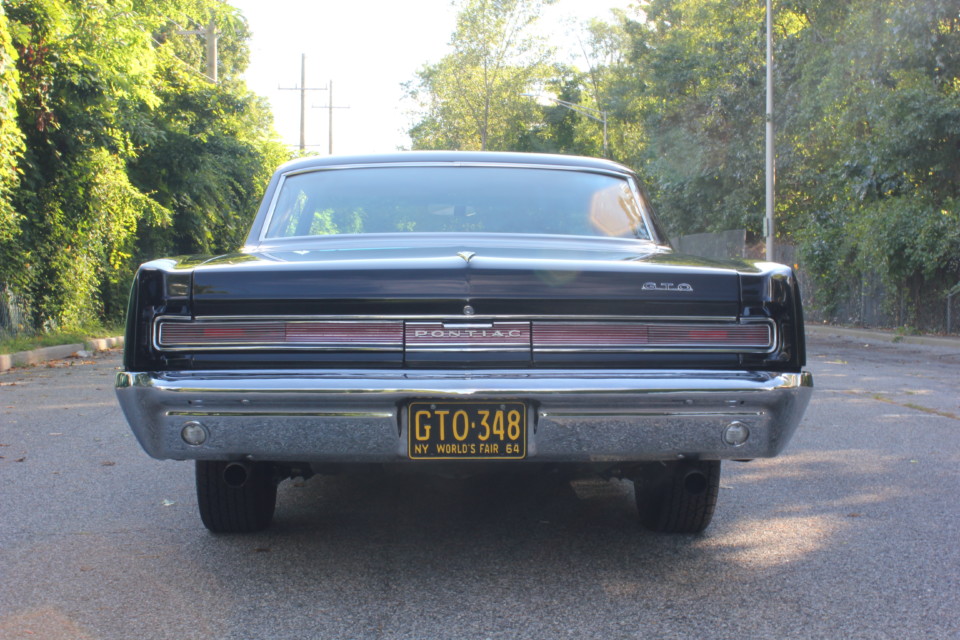
Thanks, Frank.

